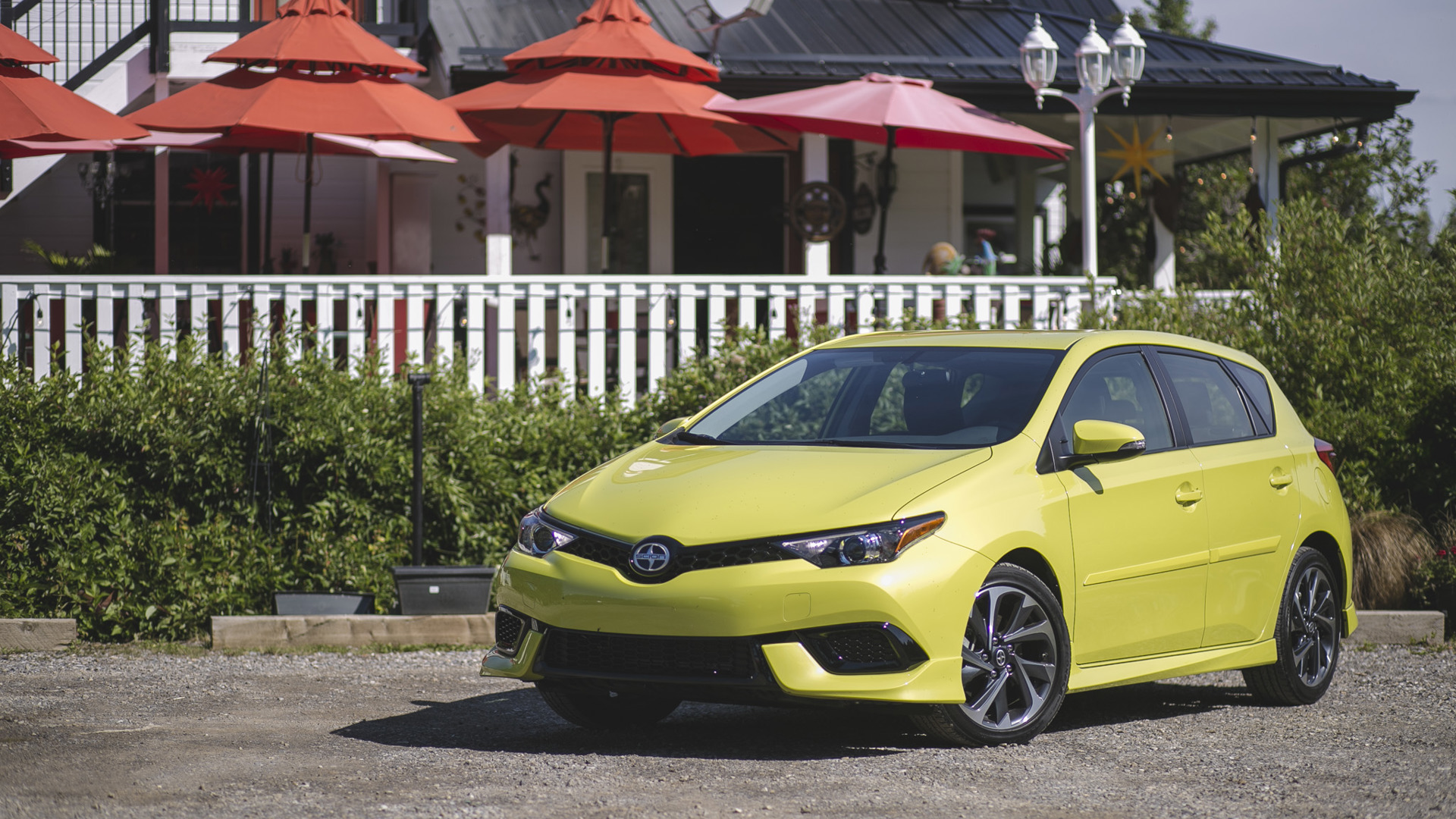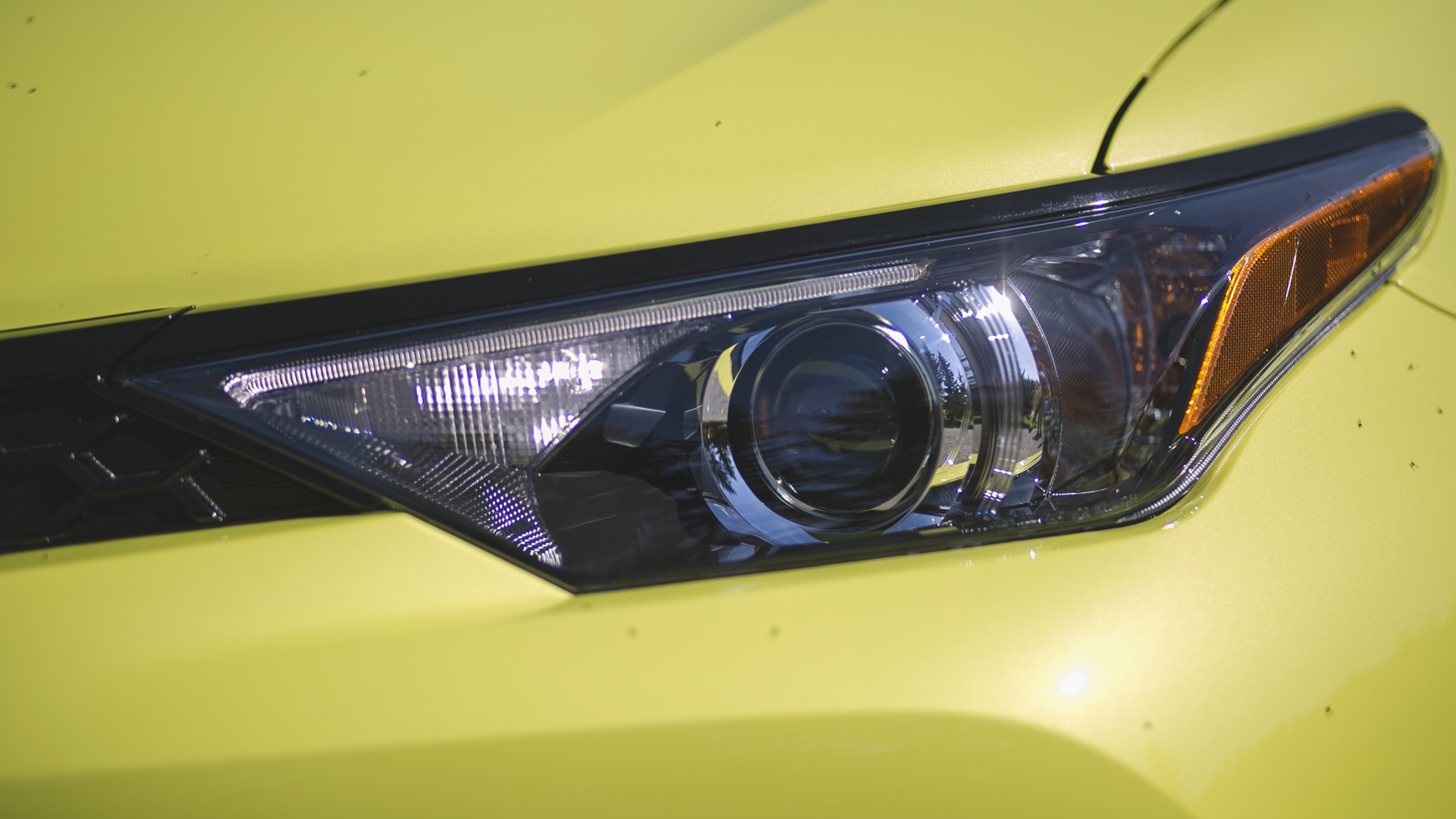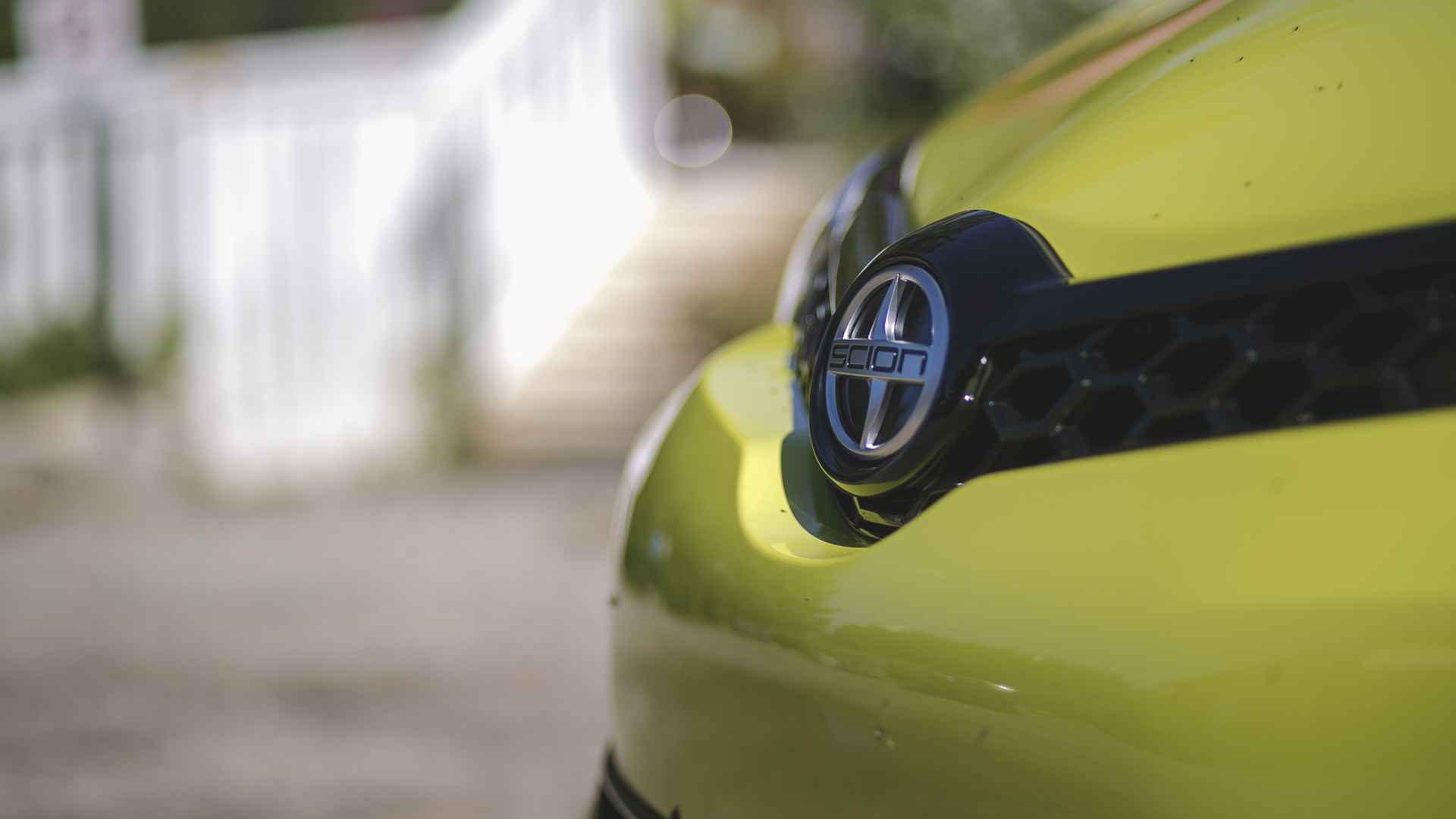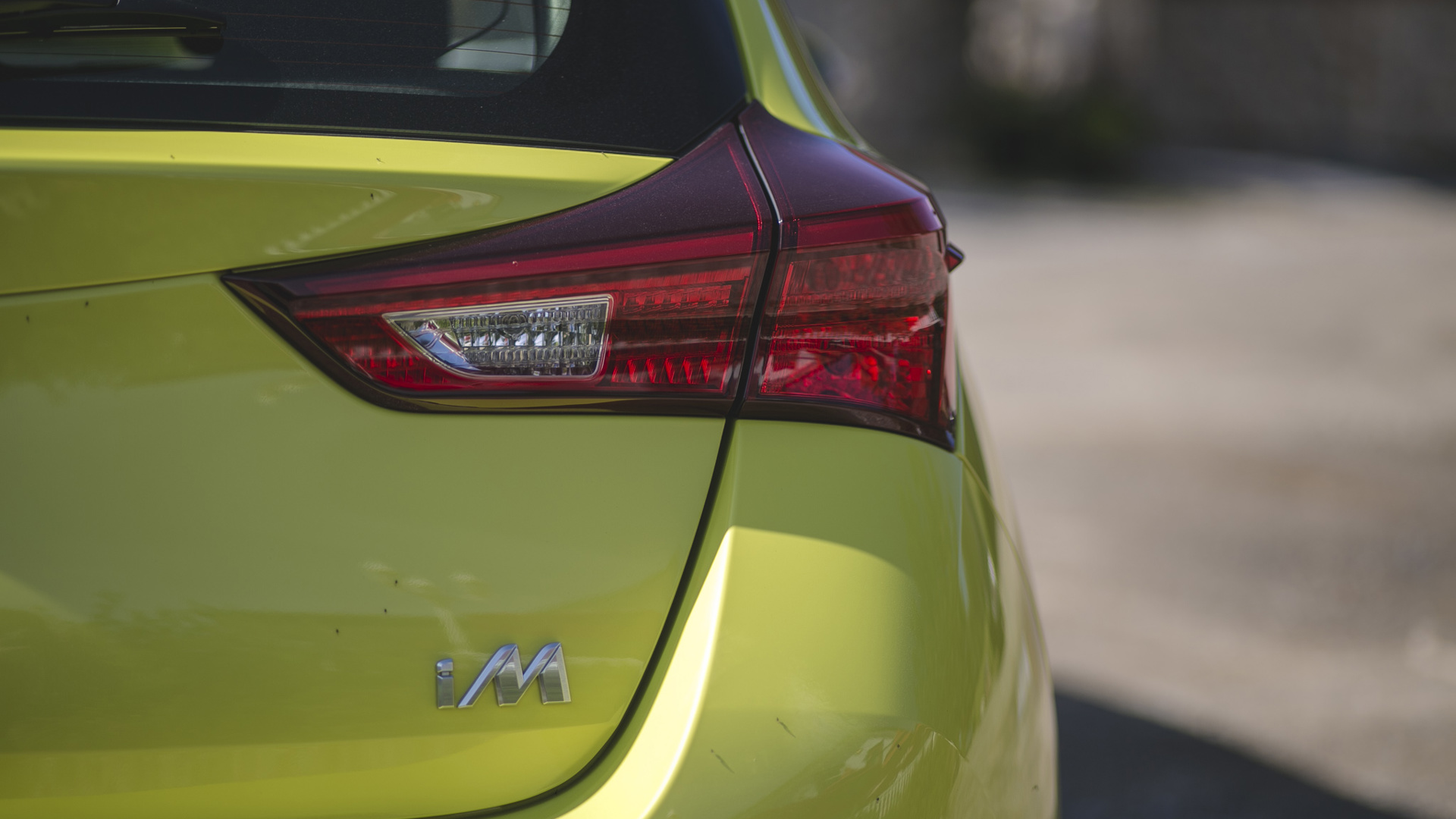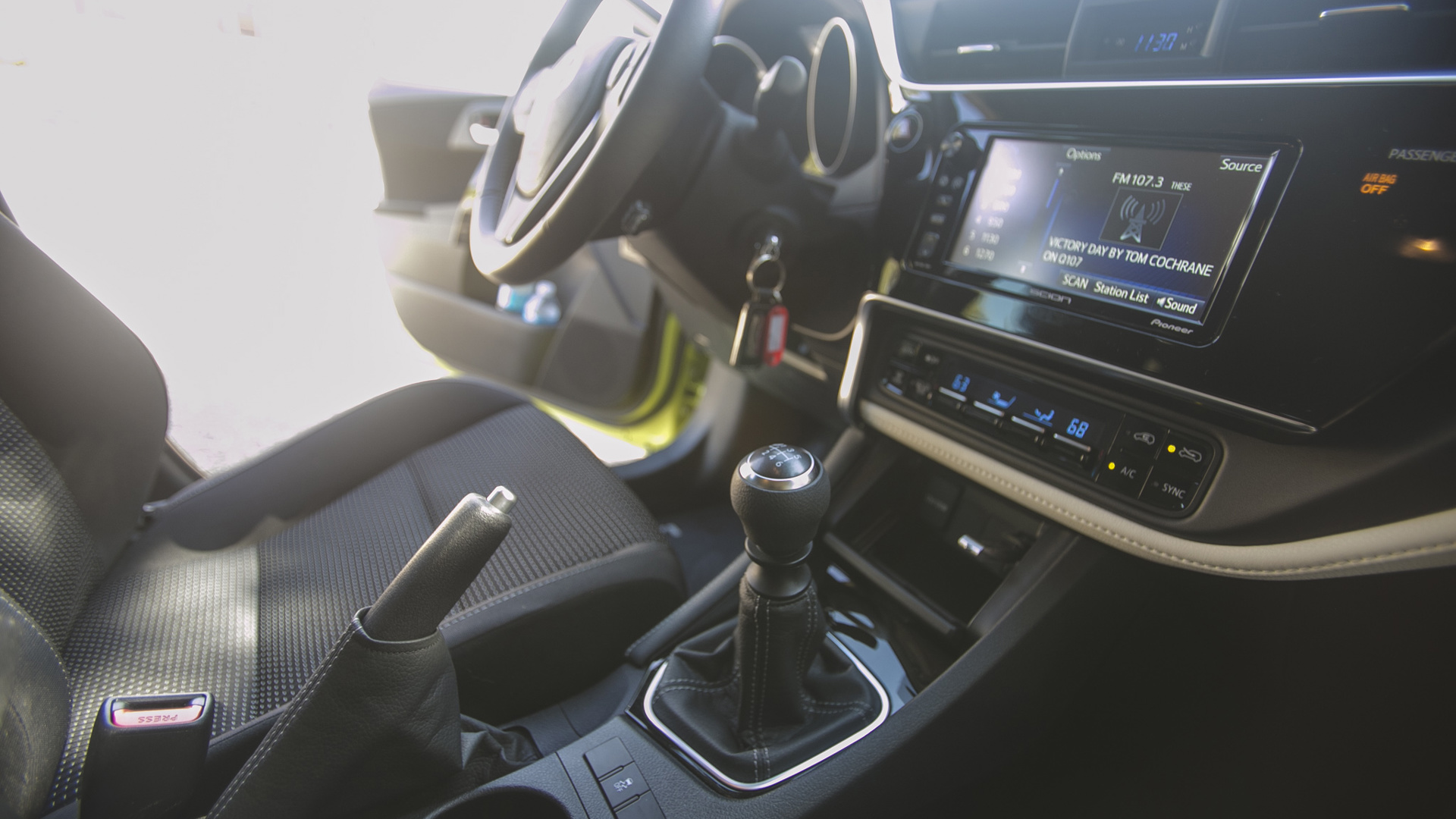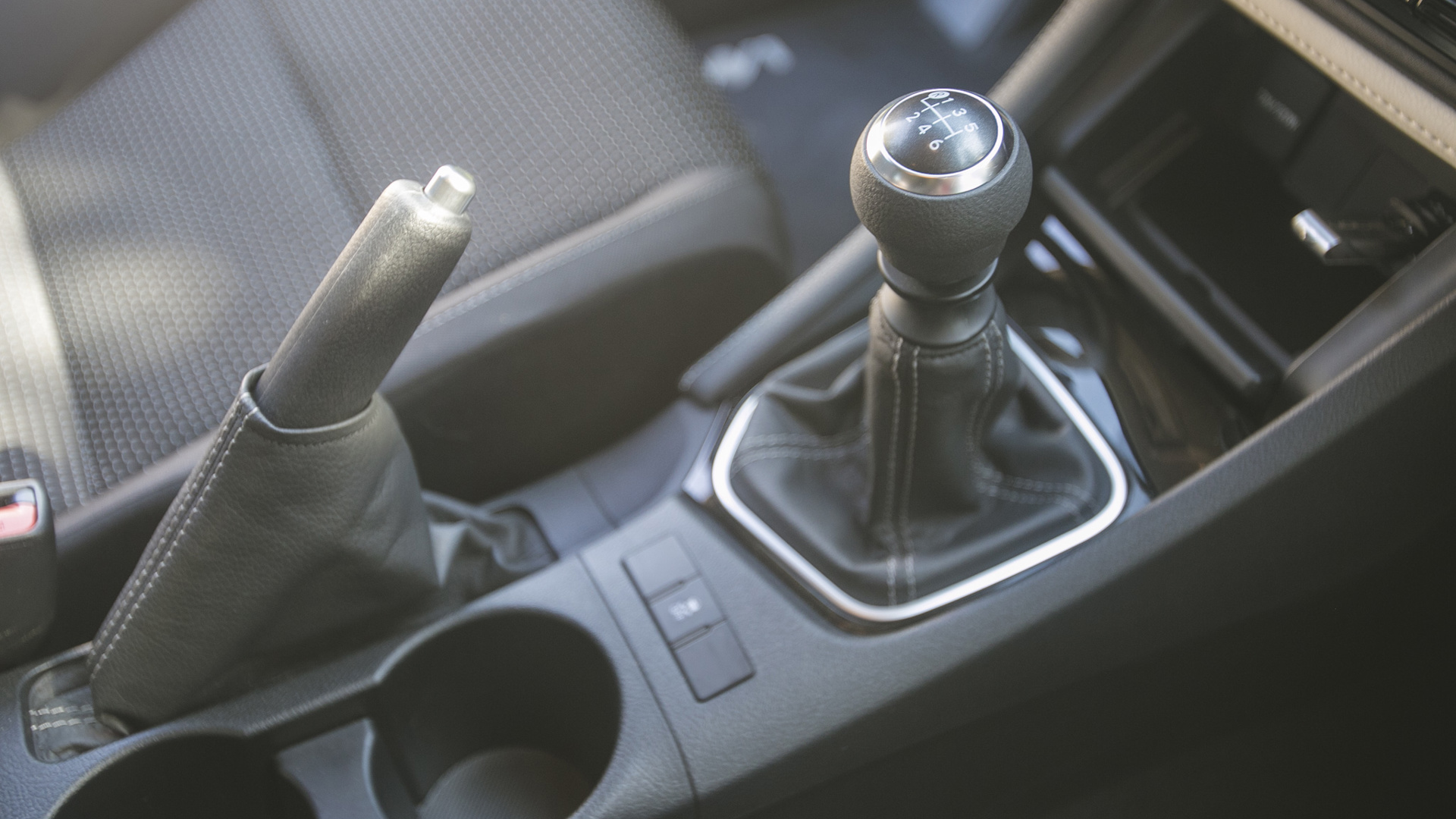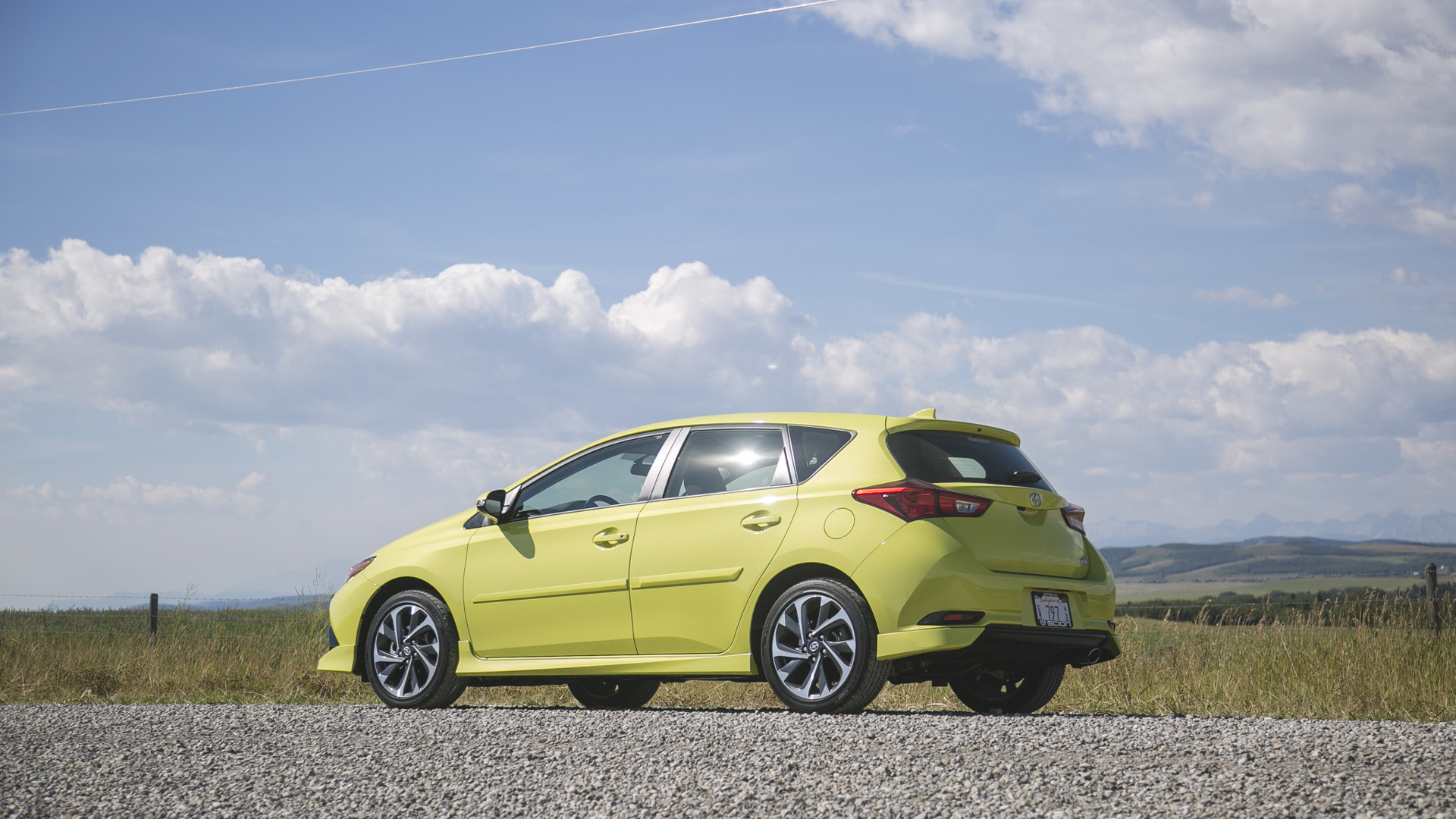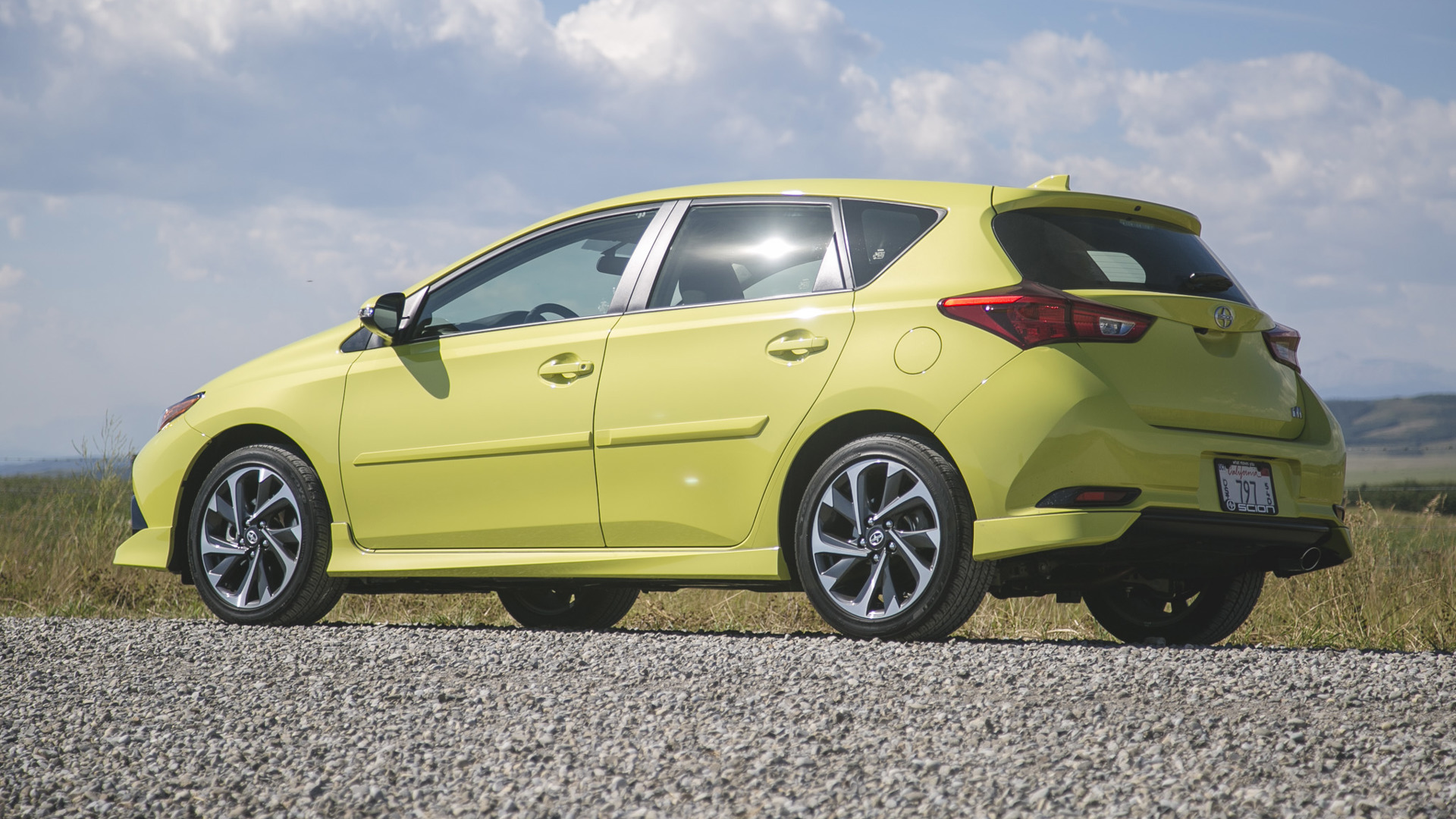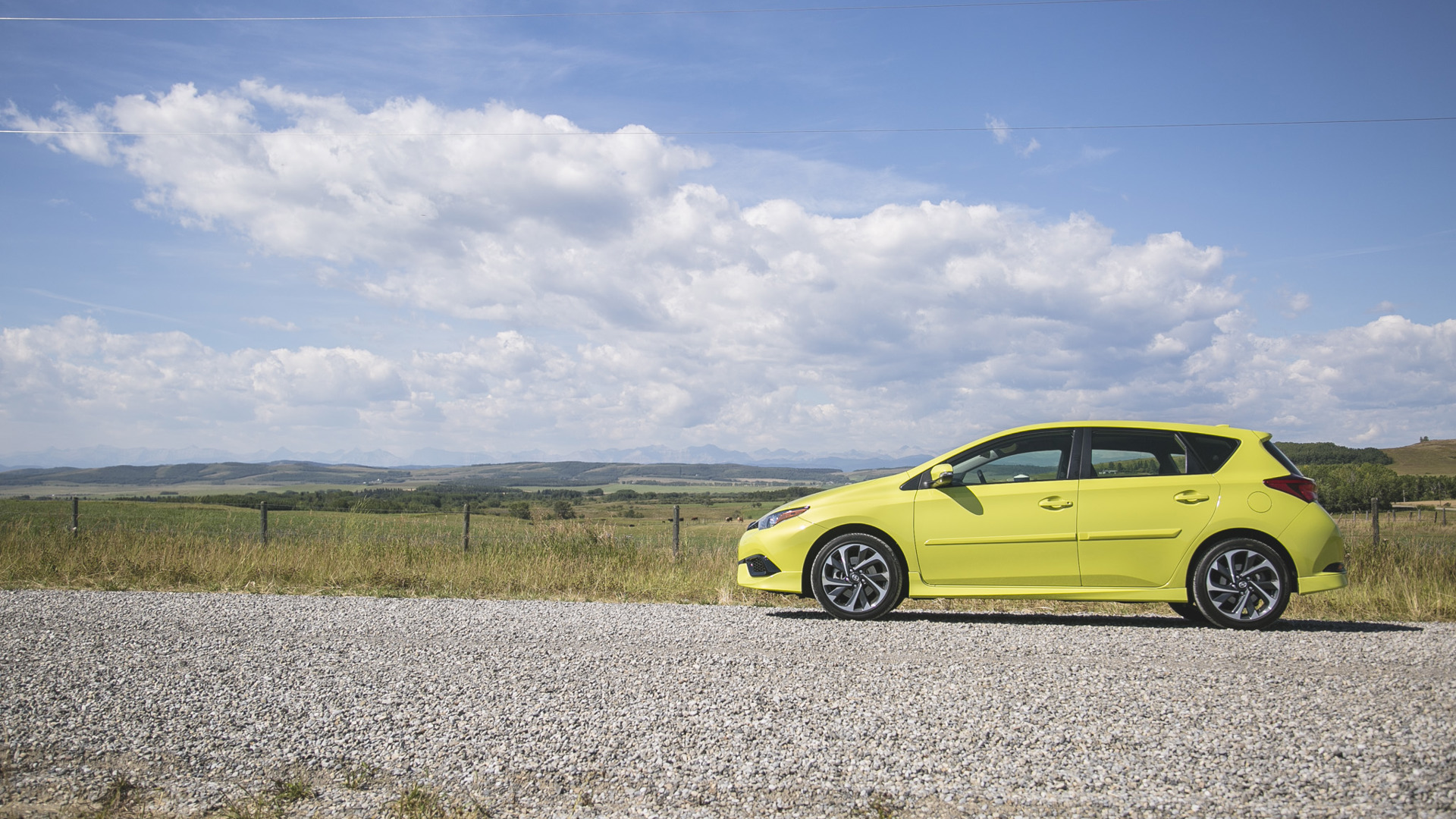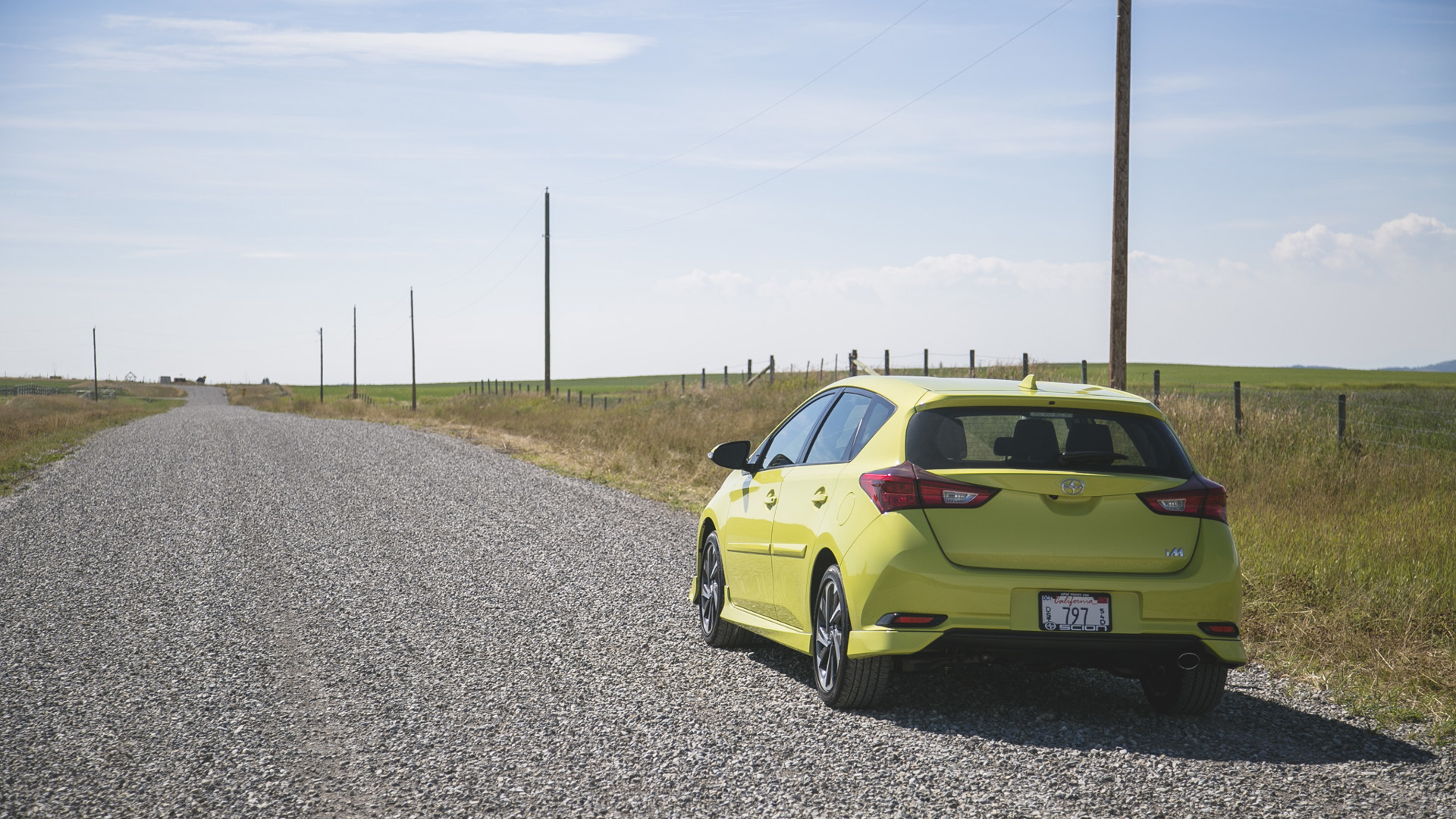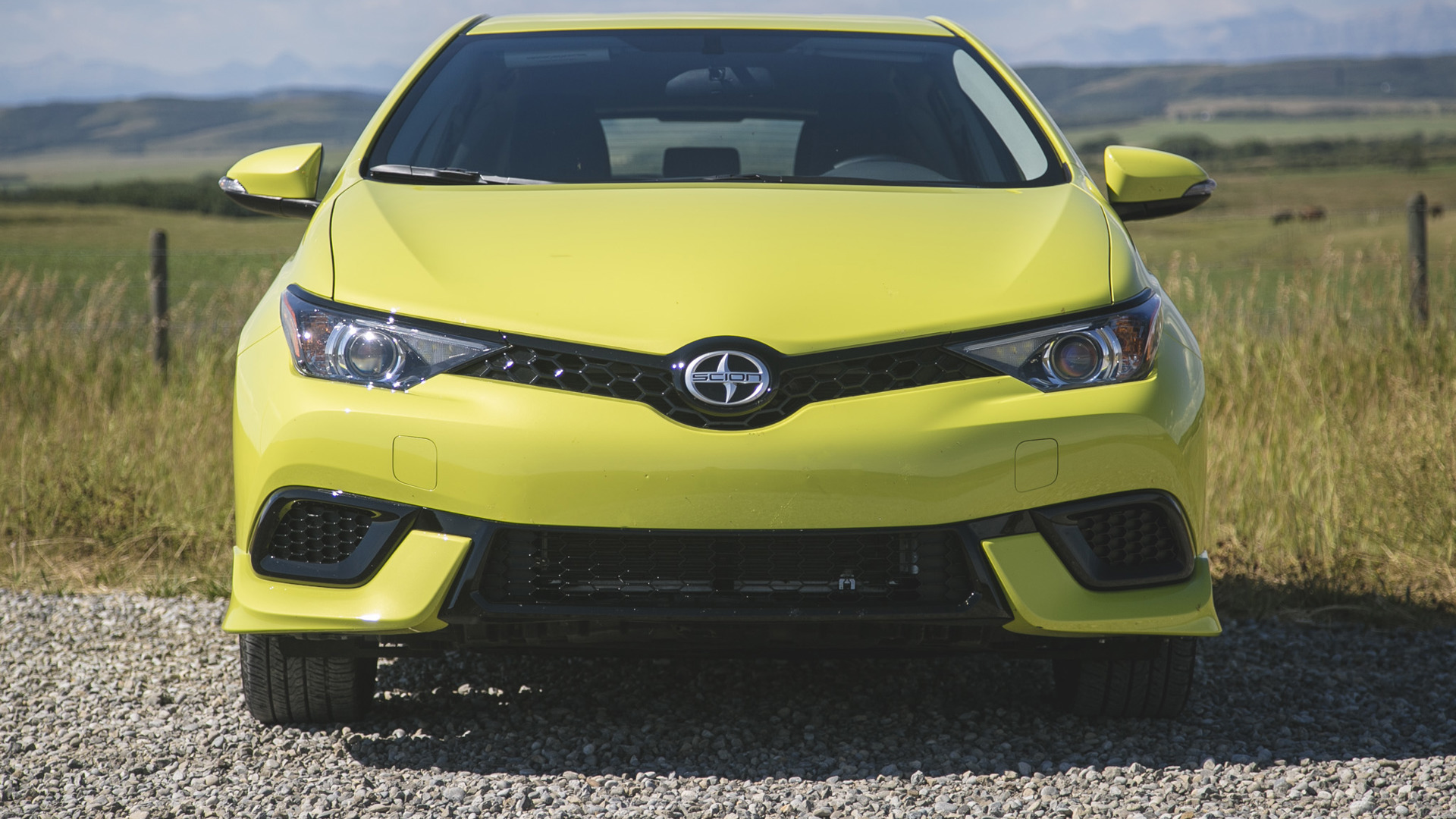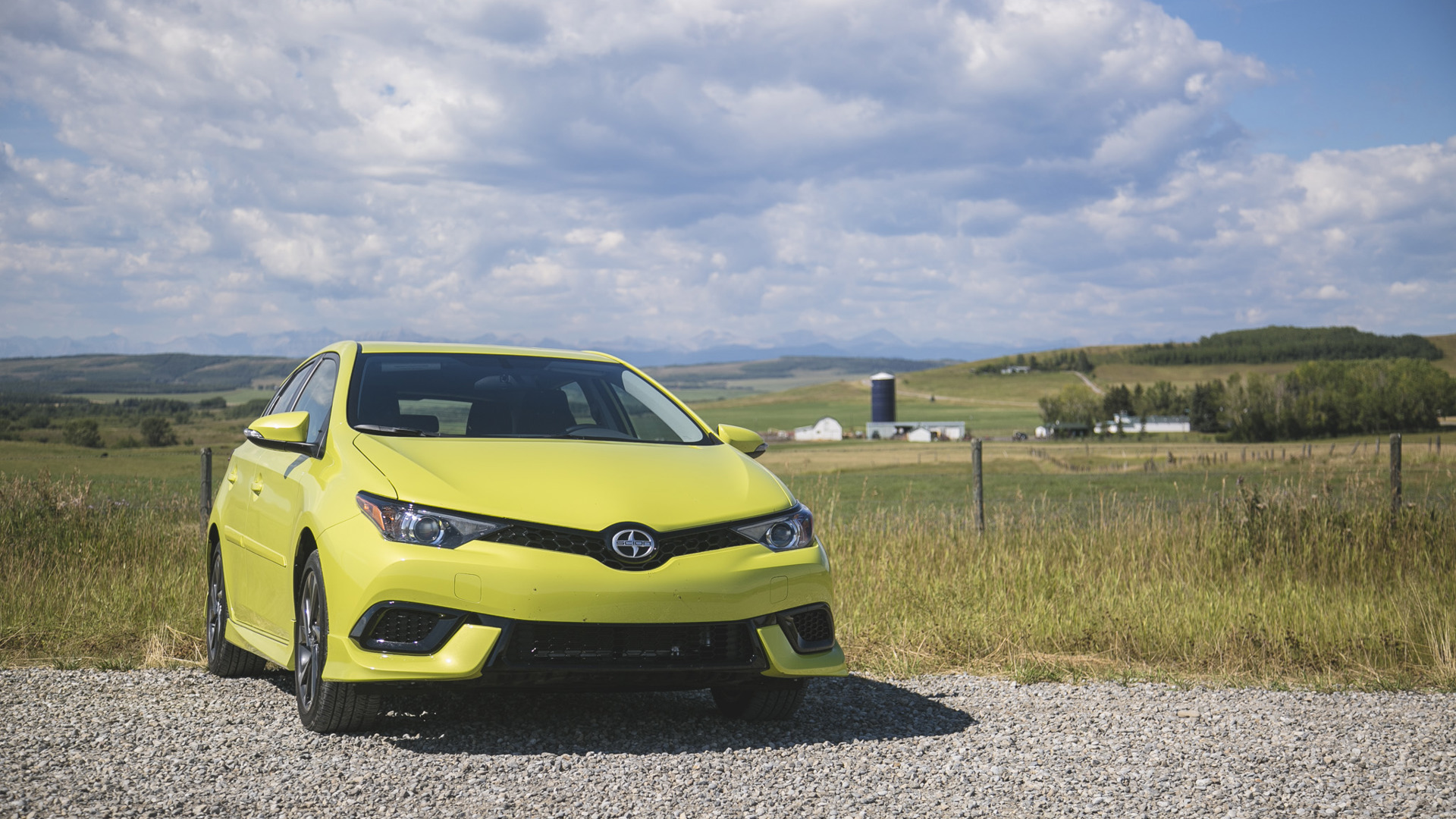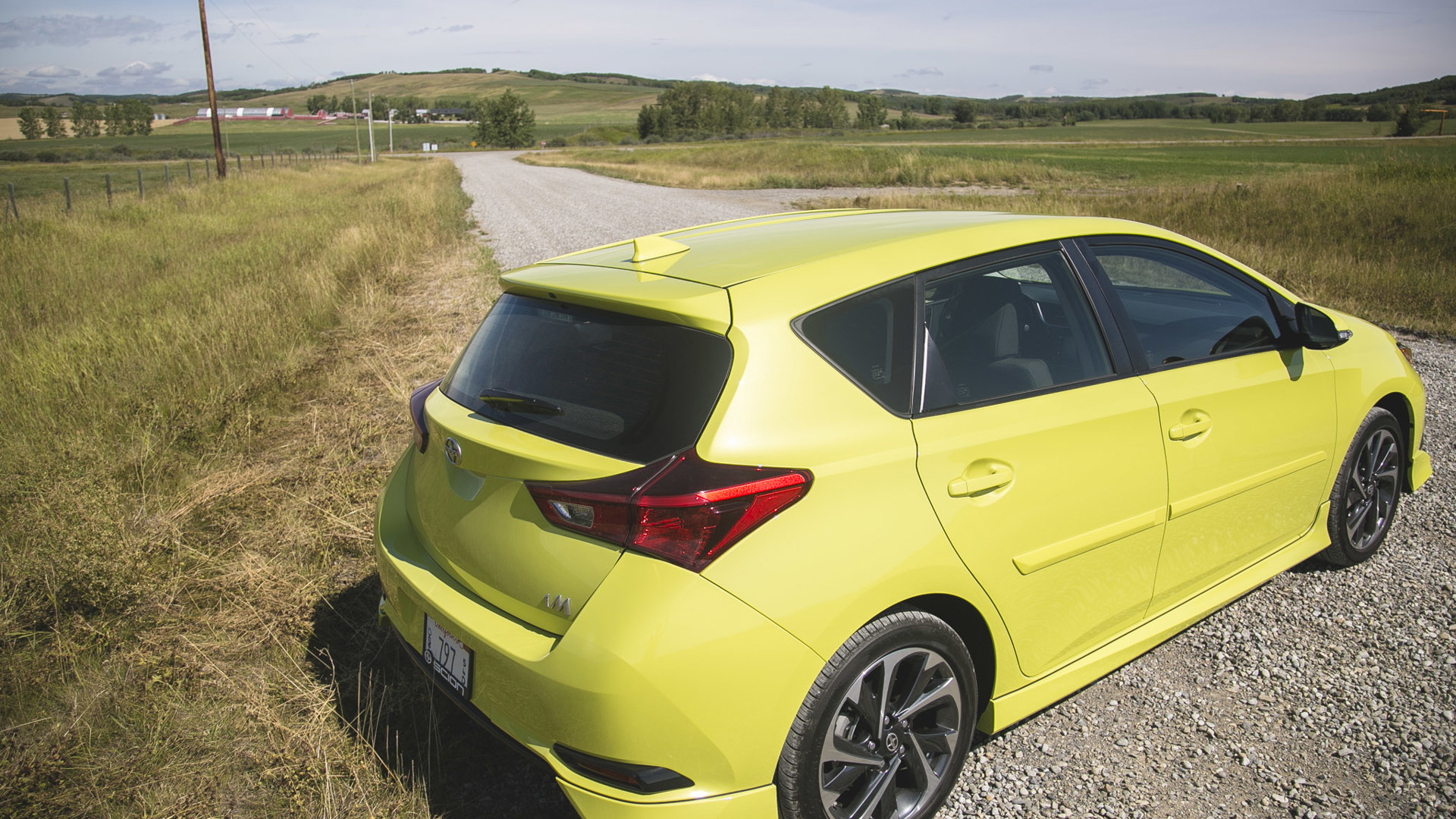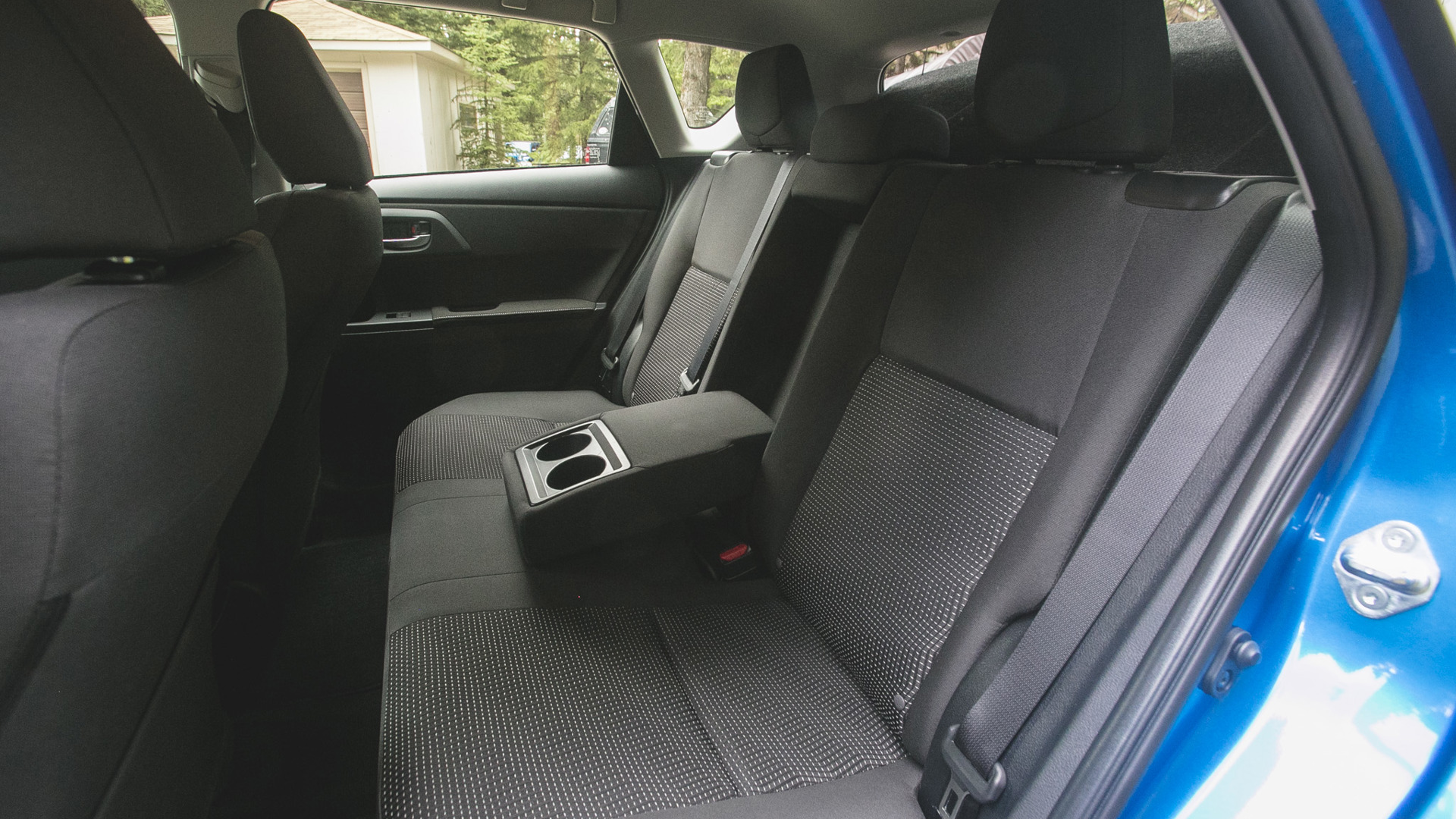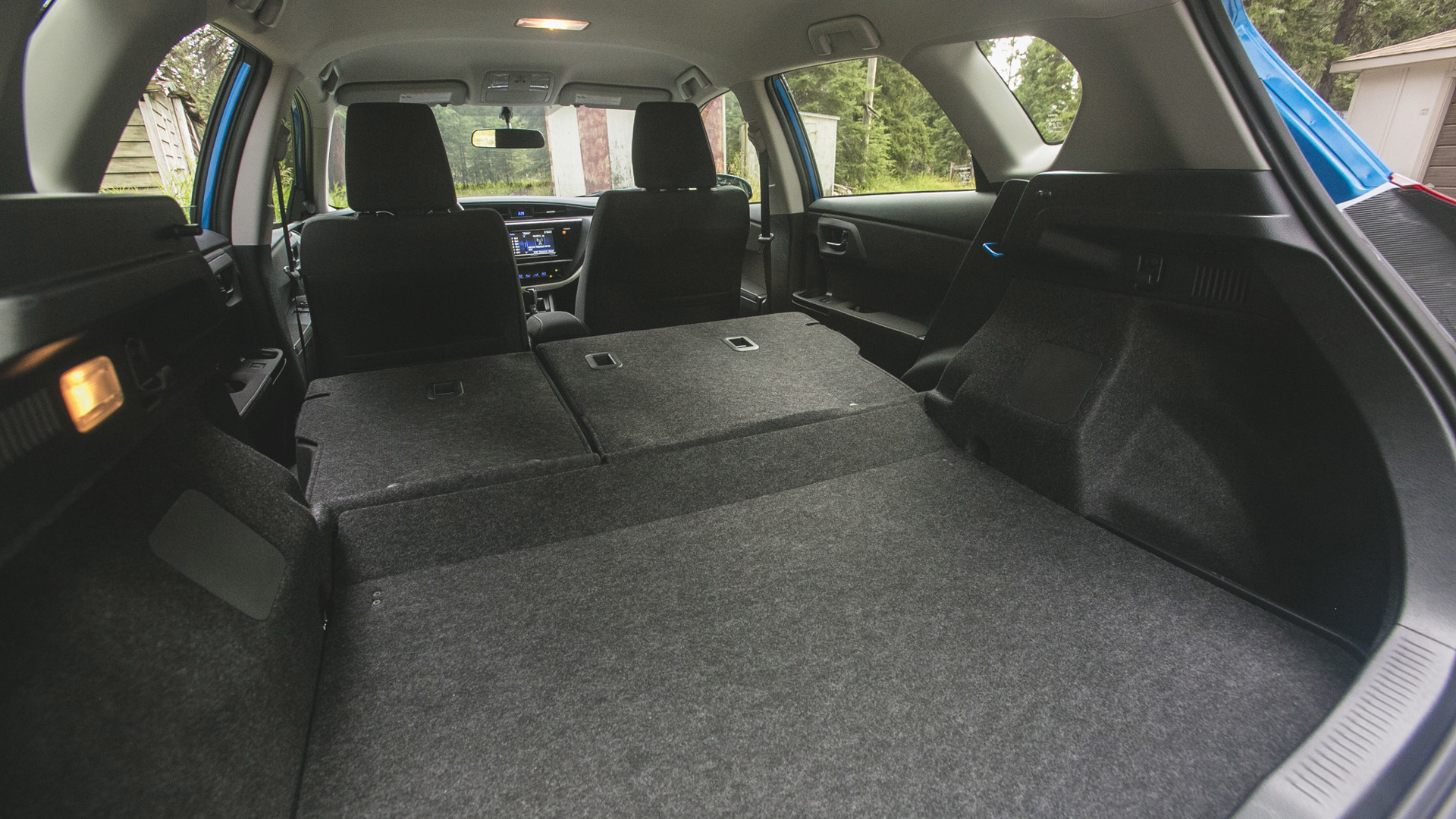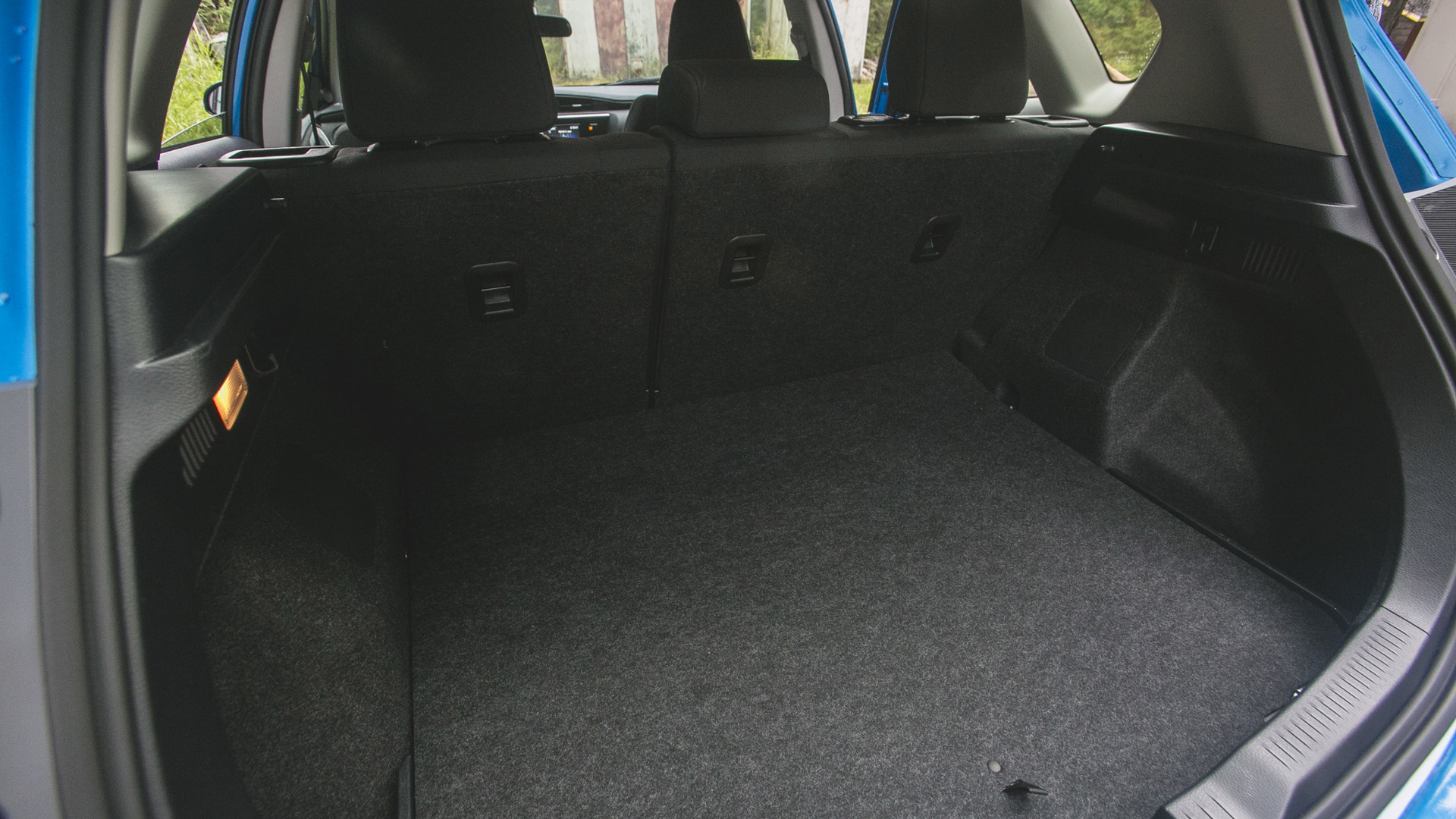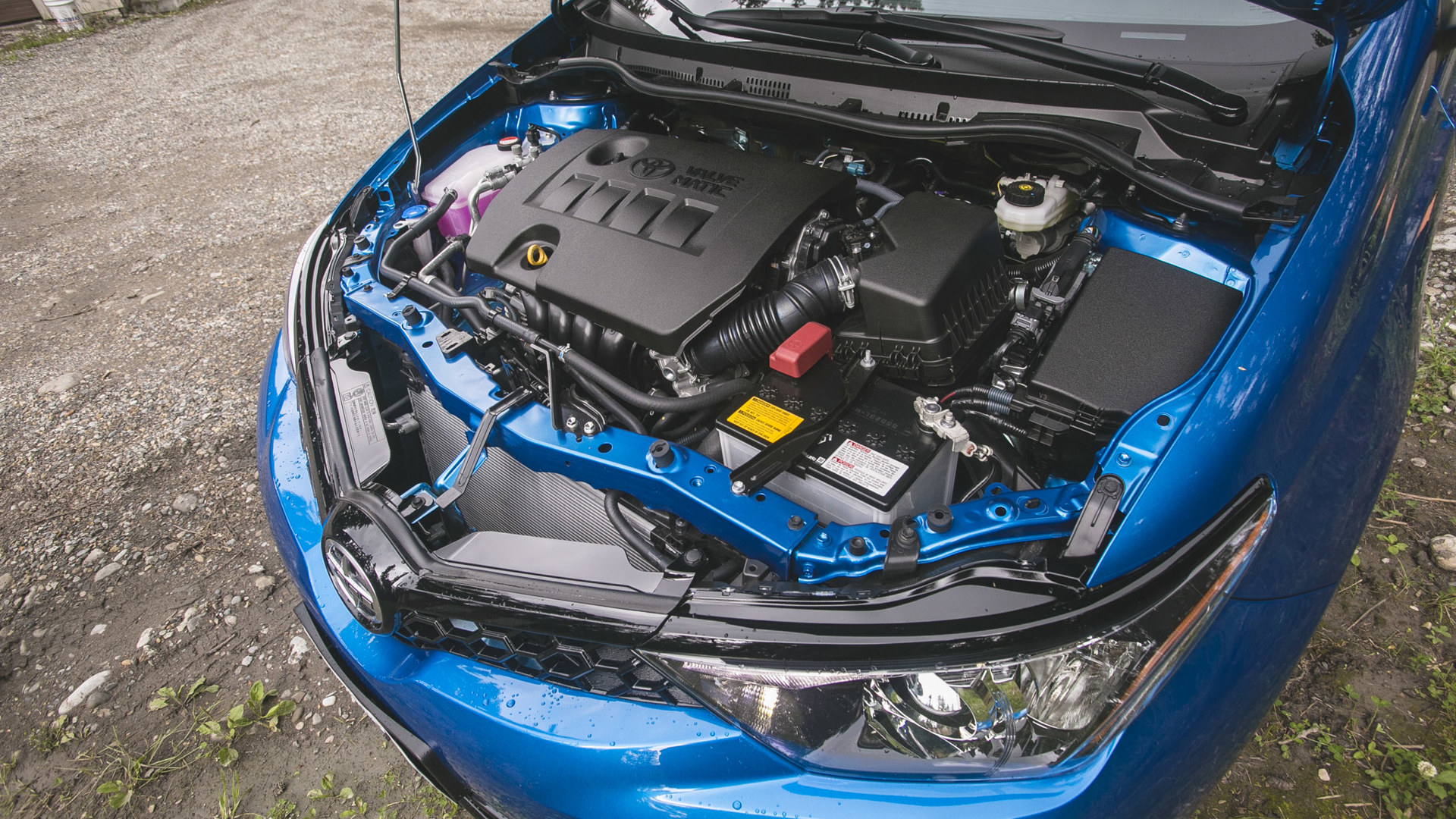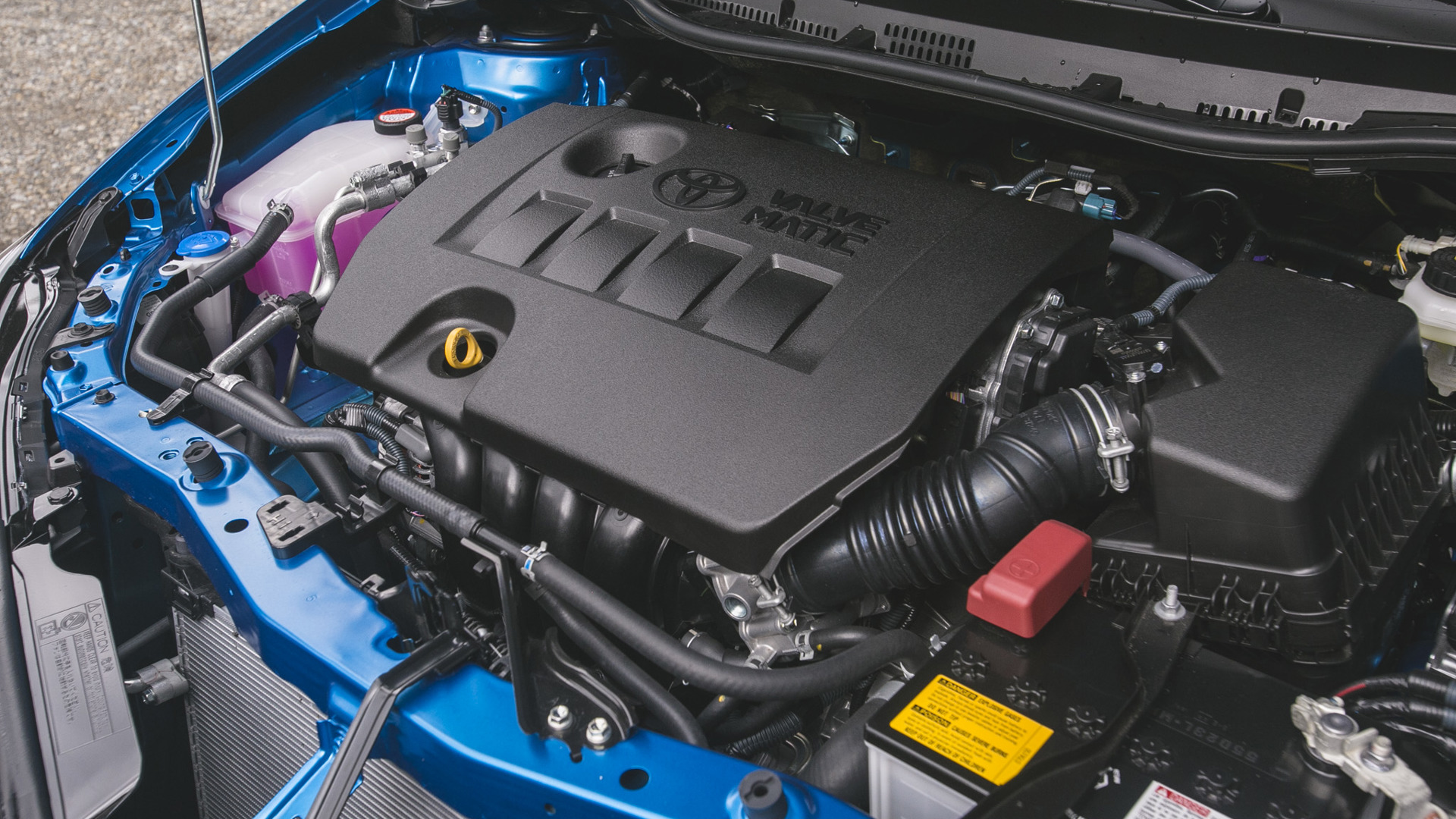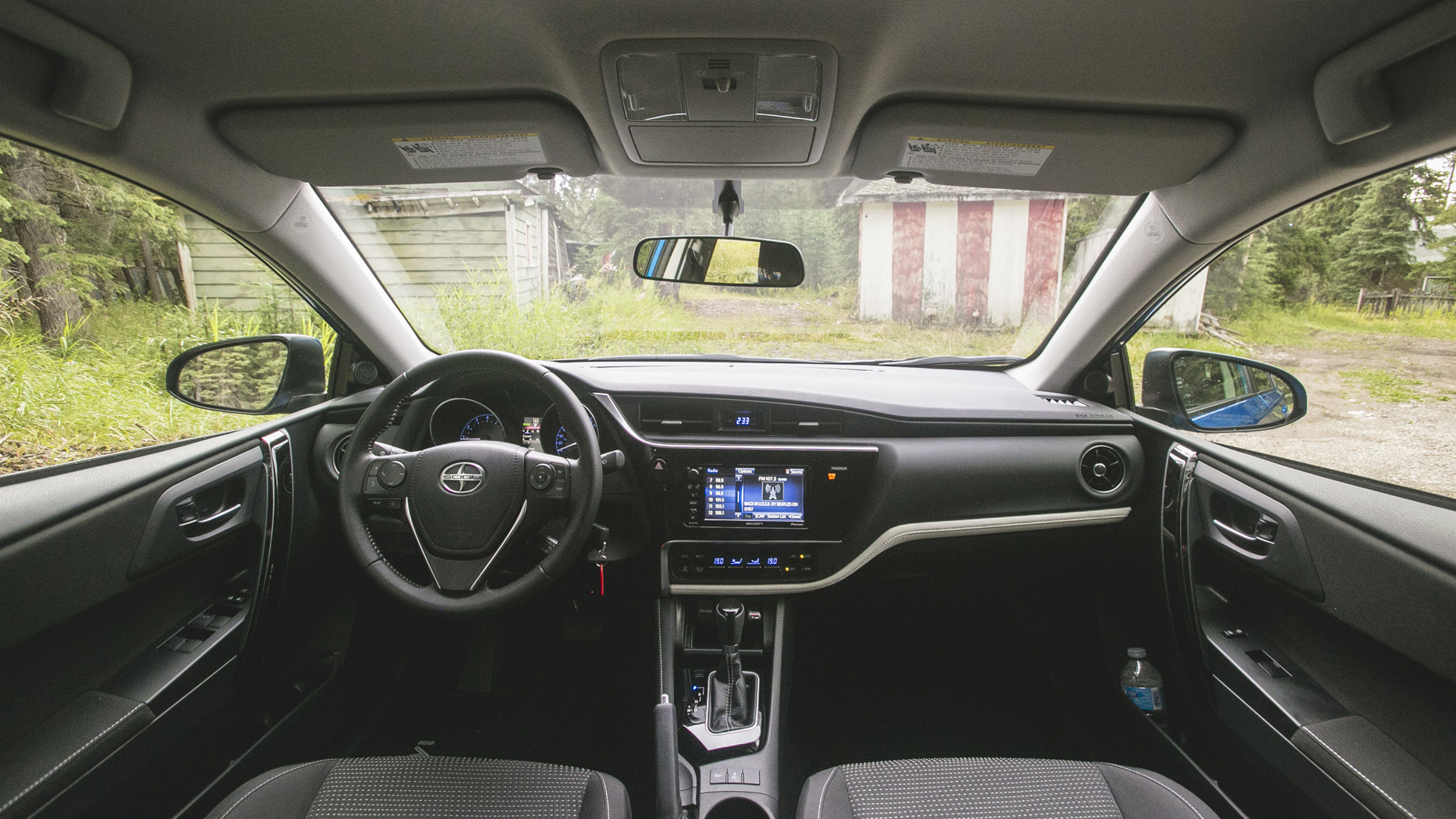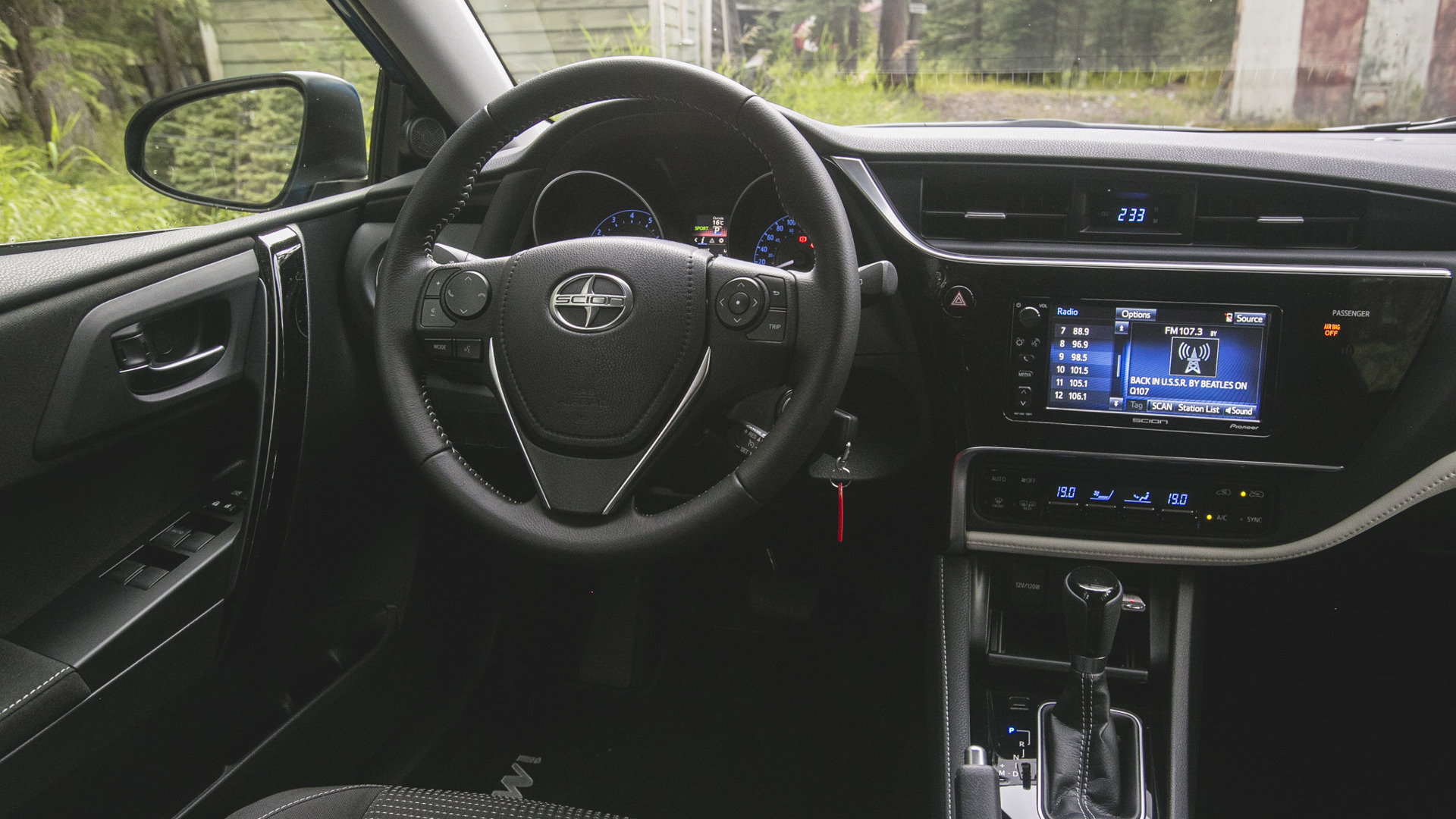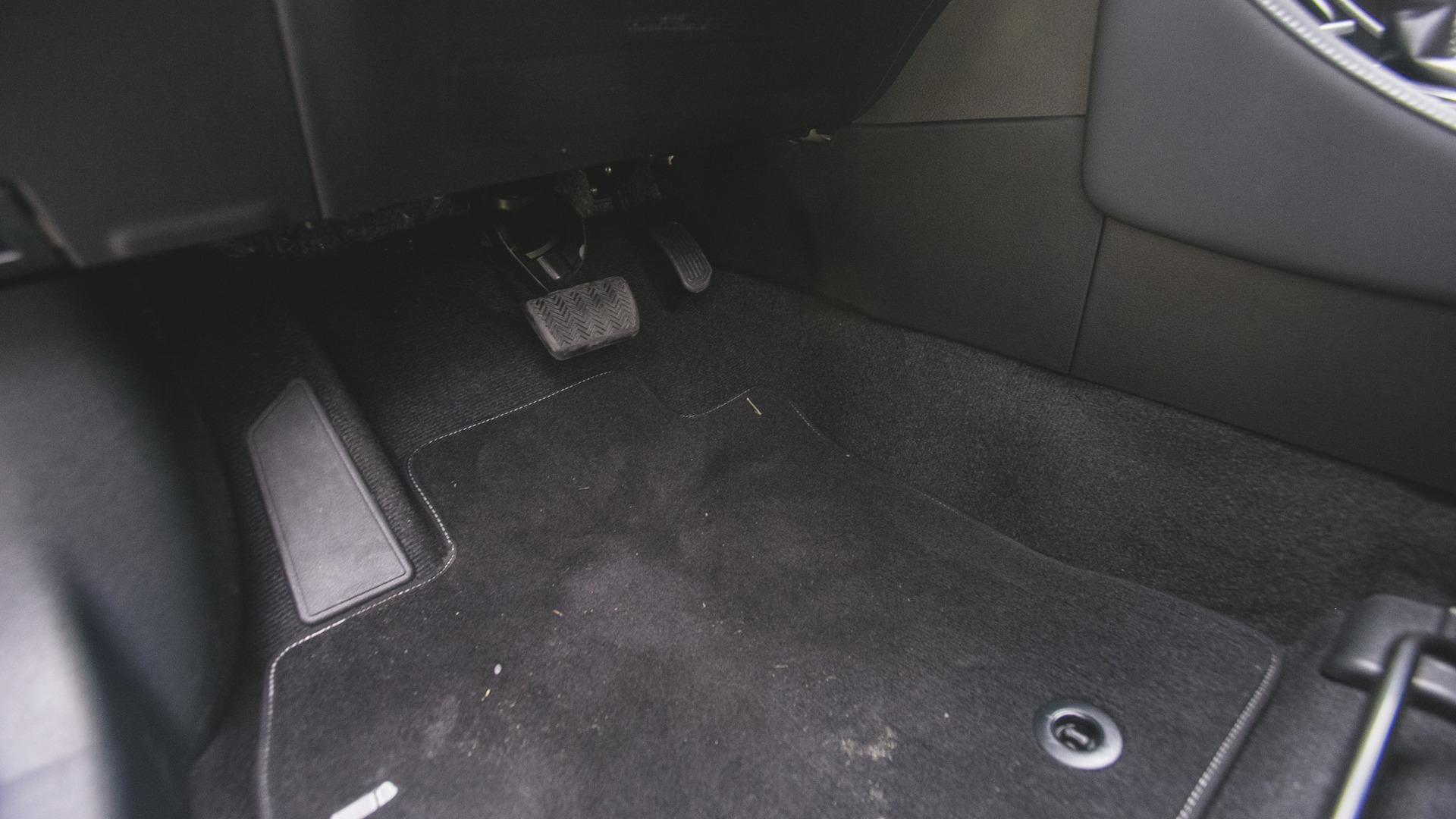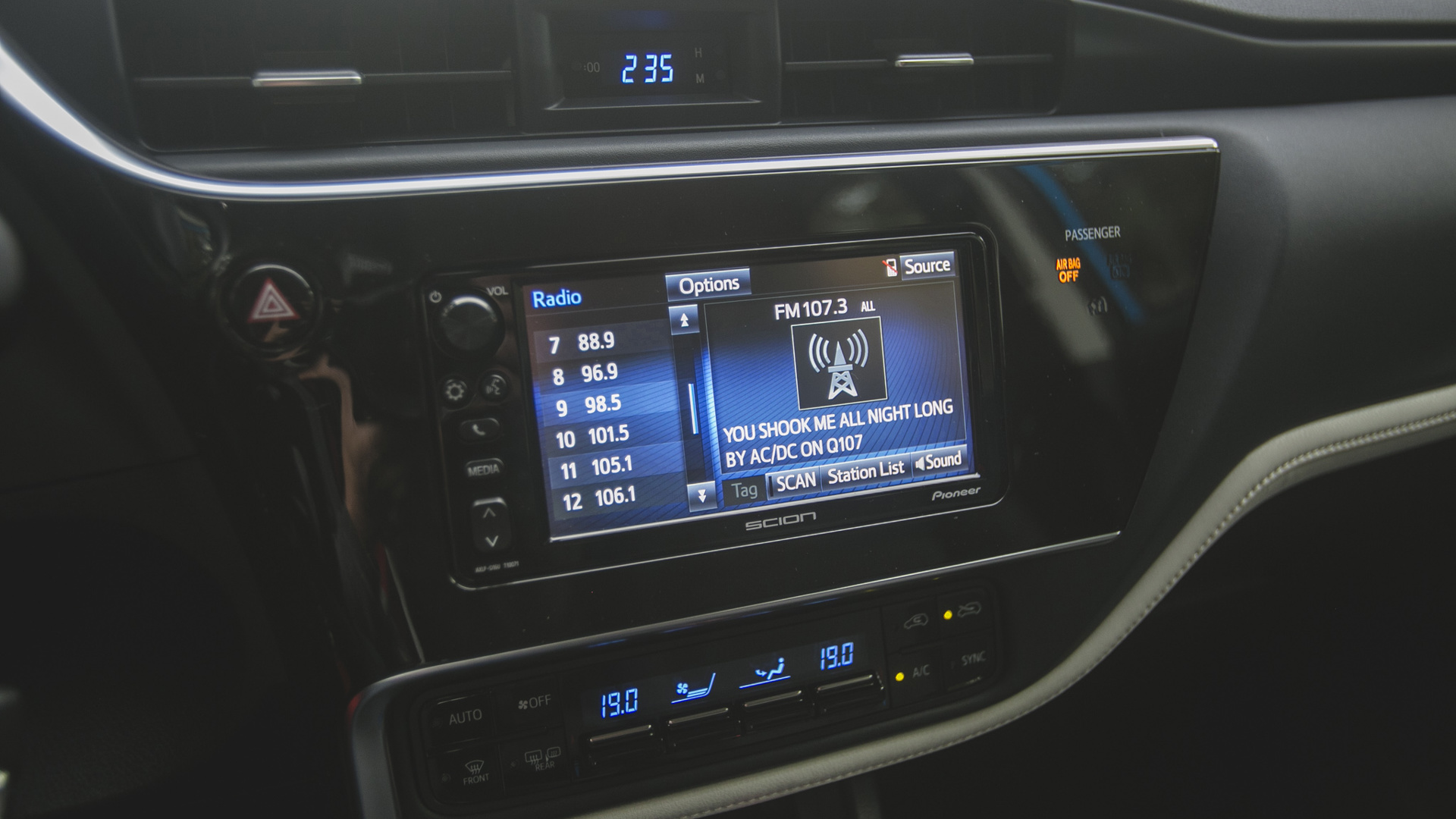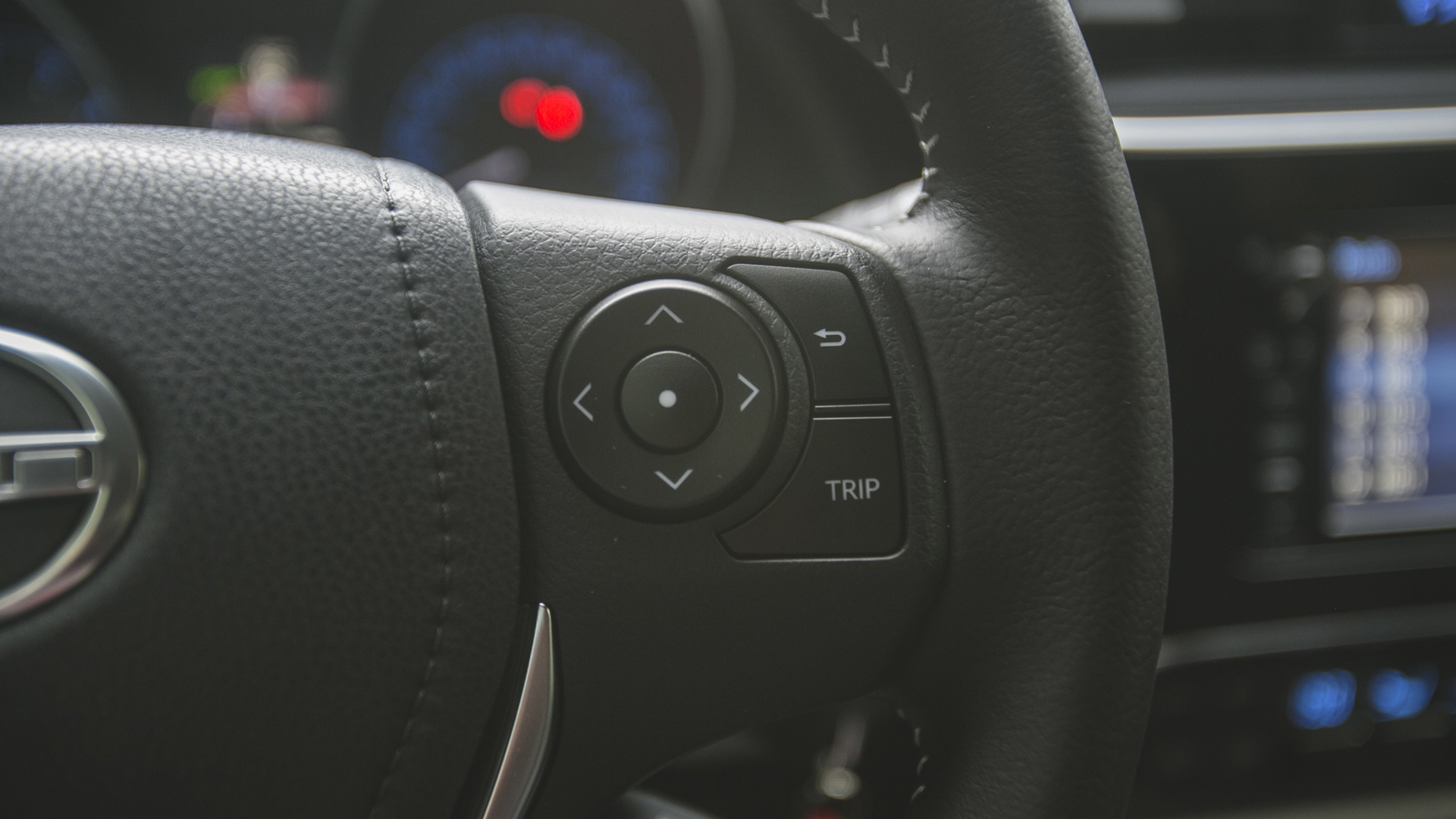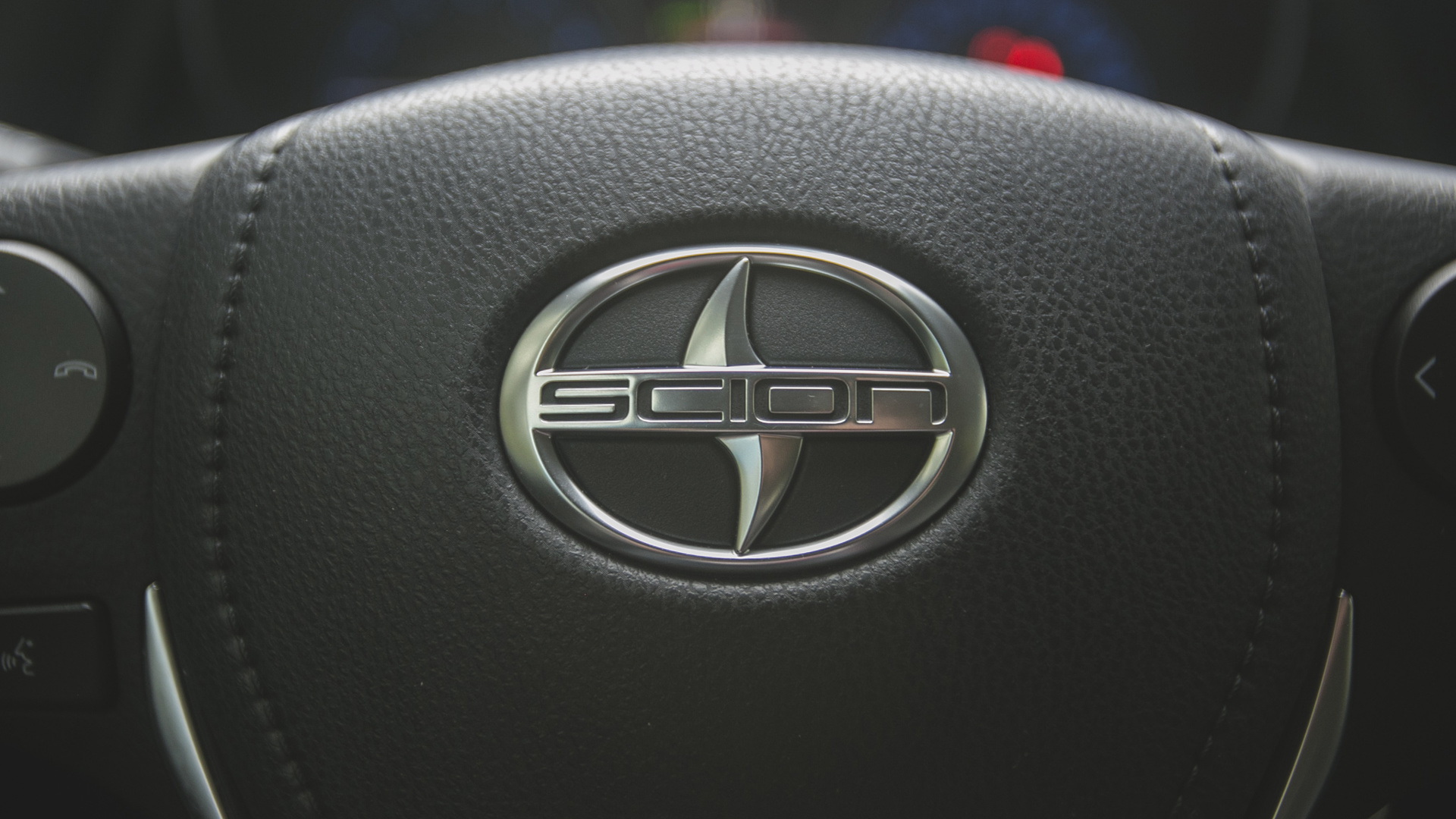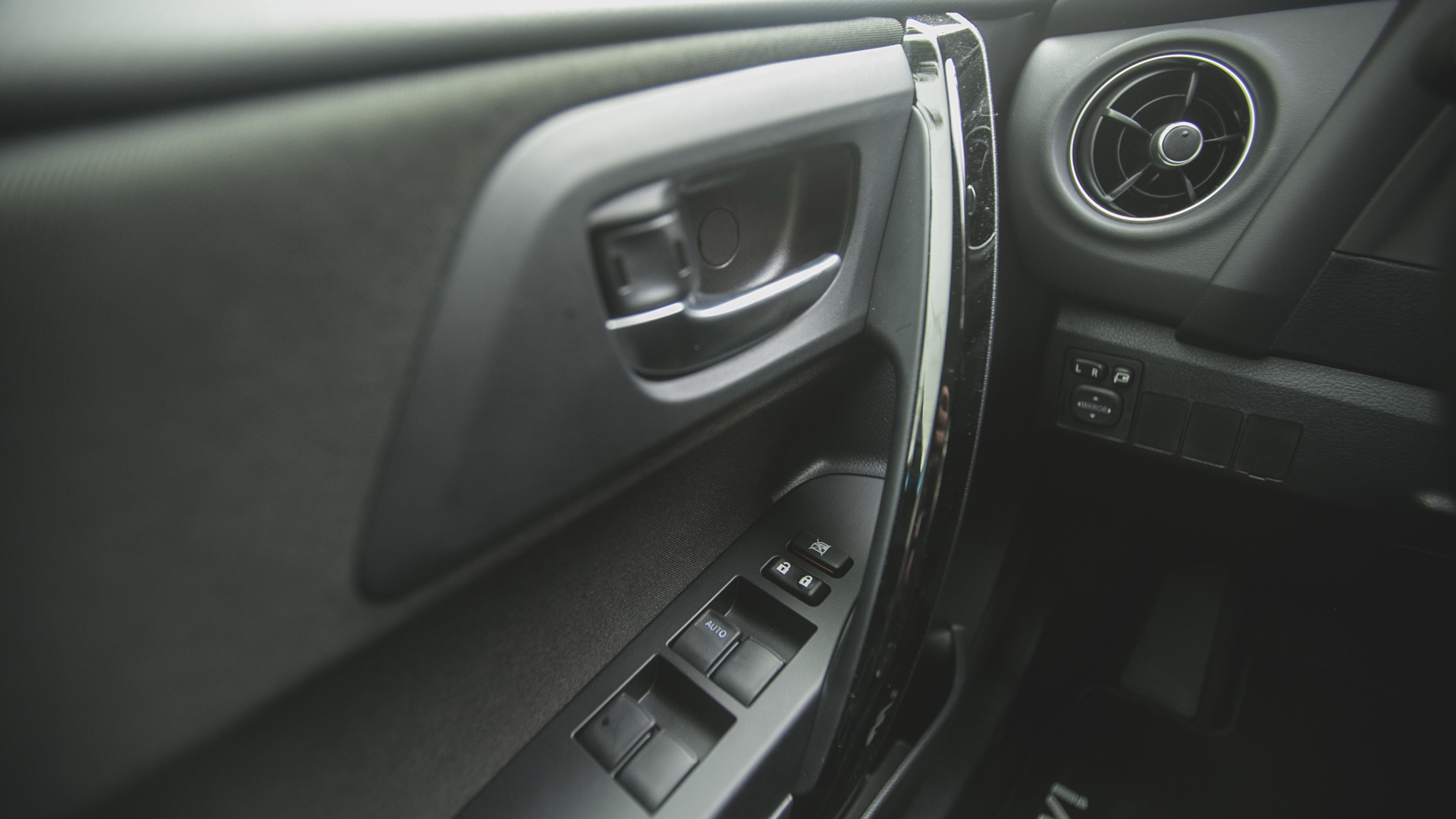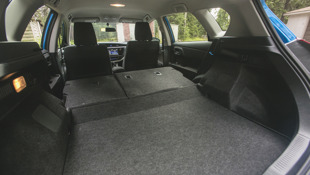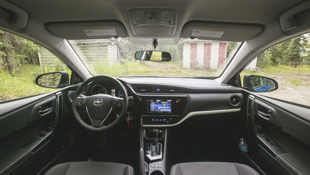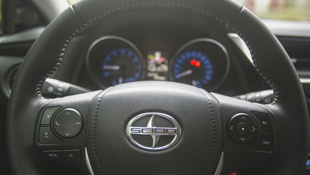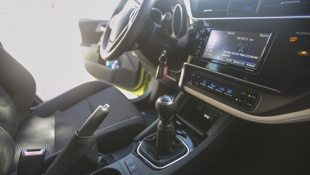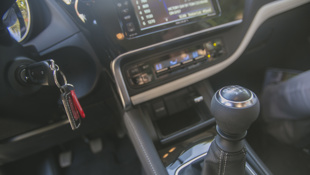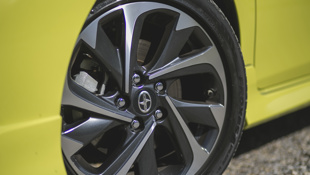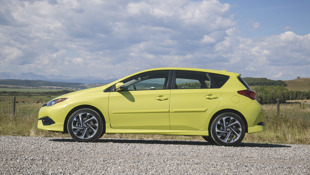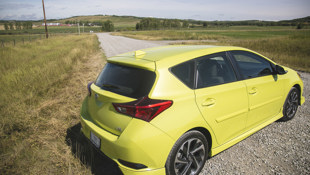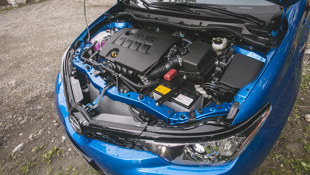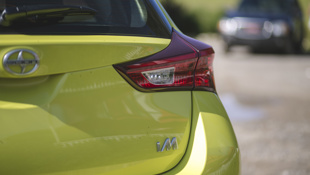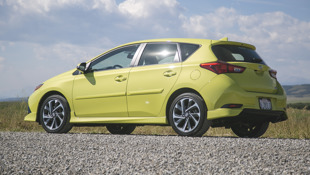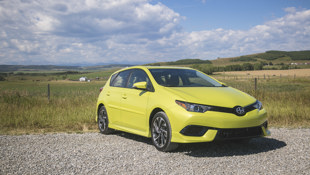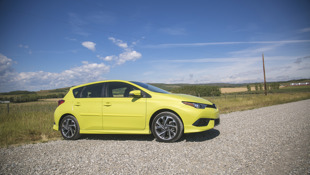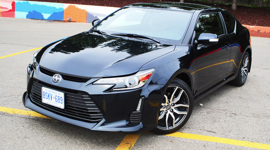When Scion first revealed the production-model iM at the New York Auto Show this year, my interest level was immediately piqued. Besides the reincarnated legendary Corolla GTS AE86 launch in 2012 in the form of the FR-S, there hasn’t been a Scion that would appeal to a broad spectrum of buyers. Previous models can be described as eccentric, peculiar, quirky or even the dreaded, ‘interesting’. Interesting doesn’t sell cars to the mass market.
...one look at the iM made it quite clear Scion is throwing its chips in with the mass-market and going to battle with the likes of the current compact hatchback kings...
While I’ll be the first to admit the Scion xB is a neat and functional little thing, cube-type vehicles have never and probably never will be the vehicle of choice for the masses. The Scion xB did its job and it did it well - it was a popular choice with the tuner show car crowd, as evidenced by the large number of xBs on the show floor of any compact car show - its wide, flat surfaces just begged for custom graphics and vinyls, while its cube-like interior was perfect for installing gigantic and extremely powerful custom sound systems. It was never meant to be the replacement for the Corolla or the Civic as the market for the Civic or Corolla is ‘everyone’, while the xB remained in purgatory with the ‘eccentric vehicle’ buyers’ due to its rather inaccessible shape and styling.
The targeted-at-Millenials tC was a little more accessible due its more conventional shape and sporty appearance. The Sport tC was fun to drive and was even available with a TRD supercharger for a period of time. The tC was also campaigned with some success in several motorsport series - including a V8-swapped monstrosity that took the Formula Drift crown with Tanner Foust at the wheel. Sales were initially strong and the tC saw some relative success for the first couple of years after its launch in 2006. By 2010, however, sales were down drastically. With the launch of the updated second-generation tC in 2011, sales picked back up for a couple of years but like its predecessor, began to drop again after the initial bump.
The tiny xD four-door, quirky almost-cube hatchback never seemed to catch on and was discontinued just three years after its launch in Canada in 2011. And the iQ, well, let’s not talk about the iQ.
So now the Scion history lesson is over, let’s move back to the iM. When the cover was lifted off the iM and the iA sedan (we’re getting the Mazda2-based iA sedan in Canada but under the Toyota Yaris nameplate, not Scion iA) at the Scion late-night preview in New York, I knew Scion was switching gears. As we know, for the most part, while neat vehicles, previous Scion models only appealed to a very small portion of the market, and one look at the iM made it quite clear Scion is throwing its chips in with the mass-market and going to battle with the likes of the current compact hatchback kings - the Mazda3, Elantra, Focus, and the Golf crowd with the new four-door hatchback.
Ok, enough blathering about stuff, let’s get to the beans.
At first glance, the four-door hatchback reminds you of a Toyota Matrix, or perhaps a souped-up Yaris hatchback - and you wouldn’t be wrong to ask yourself if you were actually looking at a Toyota Auris, as the iM rides on the same platform (which also shares a platform with the Corolla and the tC) and shares many of the same parts as its asian-market counterpart. The first thing that might grab your attention is the sporty bodykit that wraps around the entire car. While not garish looking, some shoppers may find that it looks a little tacked on, a'la the Corolla S of yesteryears. I think the kit looks great and combined with the two-tone 17-inch wheels and the aggressive front bumper with the piano-black honeycomb grille gives the hatchback an aggressive and attractive looking stance. The headlights integrate nicely with the honeycomb front grille while the lower honeycomb air inlet ties into the front lip of the bodykit (say honeycomb one more time, Ronnie!). The standard LED running lights in the power-folding, heated mirrors are also a nice touch and the shark fin antenna gives the iM some upper-crust street-cred.
Like most Scions, the iM is being sold as a mono-spec car. Mono-spec means one trim, one, spec, one model and also, one engine to rule them all. Packing a 1.8L four-cylinder, equipped with VVT-i it’s good for 137 hp and 126 lb-ft of torque. The iM is a little down on power to its competitors, but it does return a pretty good fuel economy. Scion rates the iM at 7.4 L/100 km for the CVT-equipped model and 7.7 L/100km for the six-speed manual. I can tell you with all honesty, my fuel computer read 7.7 when I returned the car after half a day of driving through the city and country roads, plus highways and byways around Calgary. While I did drive the manual version in the morning, it was a pre-production model with a non-functional fuel computer, but I’m willing to bet it’ll return a rating close to its claimed figures.
As part of the grand master plan to attract new, younger, techno-savvy and hip-to-the-times buyers, the Scion mono-spec plan includes a pretty decent goodies list. I mentioned the LED running lights in the power-folding and heated mirrors before and the LED theme is continued with LED running lights and taillights. The six-speaker Pioneer sound system, integrated into a 7-inch display sounds pretty damn good. The back-up camera works well and displays everything you would need for a good back-up camera system. The sound system provides a lot of adjustment for today’s discerning music listener. Bluetooth connectivity is must for a car like this, as are steering wheel mounted controls, and the iM does indeed have those too, along with a dual-zone climate control, contrast stitching on a nice, deep, black cloth interior, and a new 4.2-inch multi-information display sits in the gauge cluster. The leather-wrapped steering wheel and shift knob is comfortable and gives the illusion that you’re driving a premium vehicle.
Scion says the iM is equipped with sport seats. To me, sport seats mean bolsters and more bolstering. There is no bolstering in these seats. While the black cloth seats look good and caused no reason to for me to complain after a full day’s driving, they’re not sport seats. The interior is well executed and makes me feel welcome as a driver. For my 5’8” stature, I was able to rest my right arm on the arm rest while holding the wheel, this is a fantastic thing for myself. The piano black centre stack housing the entertainment system and the climate control is pleasing to the eye and looks pretty premium. I deliberately put my greasy fingers all over the piano black shiny bits and was surprised to find that material was pretty grease resistant. There are all sorts of storage options in the cabin, so expect room for all your urban survival needs.
We, as Canadians spend a lot of time in our cars, and having a pleasing interior is important. Scion have done a pretty good job with it - while it definitely won’t be mistaken for a luxury car, I didn’t find anything to ‘feel’ cheap - it’s a hell of a step up from previous Scions that’s for sure. One complaint I have is the lack of a sunroof and the bits of the interior where there’s blank plastic instead of a button. Namely next to the traction control switch, there are two empty switch plates in the manual car and it looks pretty tacky. That being said, I can see new potential buyers being won over by the iM’s attractive black interior and standard features.
With a decent-sized 588-litre cargo capacity and seating for five adult passengers with 60/40 spit folding rear seats, the iM will serve well for the average Canadian buyer. It’ll hold a decent amount of cargo for its class, it has a handy hatch and a good amount of relative room for the back seat passengers.
Mono-spec or not, buyers can choose to have the dealer install a cargo liner, cargo net, an upgraded audio system, the Bongiovi Acoustics DPS audio enhancing system, navigation and more as accessories. Soon to come as TRD accessories is an upgraded intake, oil cap and lowering springs.
How does it drive, you ask? Well, it’s pretty gutless but it’s good on gas. I spent the morning in the manual version of the car and I was a little surprised at how slow and sluggish the iM was to respond at lower RPMs. Once you’re past the 4,000 rpm range in third gear and above, it begins to wake up a little bit, but man, getting to 4,000 rpm in third gear feels like it takes a hot minute. The gearbox is standard-fare and pretty unremarkable, either way. Shifts weren’t short, nor were they overly long, like I said, nothing to remark on. The gear ratios are obviously tuned with fuel economy in mind, not winning at the local drag races. Fair enough, that’ not what it’s meant for, but for myself, it would certainly cause me to think long and hard about buying this over a Skyactiv Mazda3 or Ecoboost Focus - even the Elantra GT had more noticeable get-up-and-go. After having to pull a U-turn, I floored the iM in second gear at about 30 km/h and I looked at my driving partner in disbelief after a few seconds of staring at the needle crawl up the tach and told her it was floored. She didn’t believe me at first. That’s what it feels like in second gear. Once you’re at highway speeds, the iM can pass if you drop down to third gear and floor it. Expect to have to work the gearbox hard for any spirited driving.
After spending my morning in the manual model, it was time to switch over to the automatic model. Equipped with a seven-stepped CVT simulating seven gears of an automatic transmission. In most cases, nothing says nap time like a CVT equipped commuter car, but in this case, I was very surprised to discover the CVT was far more enjoyable to drive. The “ratios” were noticeably shorter in the manual car, especially in the lower gears, providing what felt like stronger acceleration and even more noticeable response. Stab the go pedal in the manual iM and you’re rewarded with a sluggish throttle response that’s typical of today’s cars equipped with fly-by-wire throttle systems tuned for economy, mileage and zero emissions. The CVT, while not razor-sharp, was definitely more responsive and seemed far more eager to please. The steps or ‘shifts’ were smooth and quick. The ‘manual’ shifting mode worked as it should.
Thumbing the ‘Sport’ button, the iM’s CVT changes modes and provides the driver a new map. Be warned, switching into Sport mode generally keeps the noise levels a lot higher as the map keeps the revs generally above 4,000 RPM where the limited magic happens in the iM. The Sport mode provided a much-needed boost in driving enjoyment and I found myself starting to enjoy the spirited drive much more than I did in the manual car. This was an absolute first for me. I never thought I’d rather tick the CVT box over the manual box for any car.
The iM never really felt ‘buzzy’, nor was the cabin loud. At highway speeds, even with the low profile tires, I was able to maintain a conversation with my colleague without any issue.
The iM has it pretty good in the handling department - equipped with the tried and true double-wishbone suspension out back instead of the dreaded torsion beam and 225-width, low-profile tires, I was impressed with how planted the iM was throughout the corners. Corner entry was pretty fun and the iM was eager to please when asked to turn up the fun dial on the roads outside of Calgary. Having a car that’s fun to corner while offering up a good amount of grip can be a little frustrating when it’s time to exit the corner. Part of the fun of a performance car is being able to rocket out of a well-taken corner. I had to remind myself (and you should too) that the iM is not supposed to be a performance car. It does its job really well - drive from A to B while looking good, making its occupant feel good while returning good fuel mileage.
The ride quality was pretty good and the iM never felt crash over the bumpy country roads, complete with some serious dips due to frost heaves and other road hazards. The little iM soaked up the bumps so well, I didn’t feel the need to avoid any sort of the bumps or dips in the road and carried on in comfort the entire drive.
In addition to the good looks, nimble handling dynamics, its long list of standard features, the iM also shines in the safety department with eight airbags, hill start assist, standard back-up camera and the Scion Star Safety System.
Pricing for the accessories and TRD add-ons are not available at this time, but a brand new Scion iM, painted in your choice of Black Sand Pearl, Electric Storm Blue, Barcelona Red Metallic, Spring Green, Classic Silver Metallic, or Blizzard Pearl, it’ll run you $21,165 for manual transmission models and $21,990 for the CVT models, respectively.
In the seas of the highly contested compact hatch market in Canada , the Scion iM stands to make a splash; whether or not it will ride the splash into a tidal wave of sales over the stiff competition in Canada will be a tossup. For the majority of buyers in the segment, features, looks, fuel economy, price and comfort will play a key role in the buying decision, much more so than power delivery and the iM truly does shine all departments other than power delivery in this writer’s eyes. When I first saw the wide-body, big brake -equipped concept car at the LA Auto Show last year I was intrigued but I knew the production model would be a watered-down version of the concept. And indeed, gone are the big brakes and the obnoxiously awesome wide-body flares and fenders.
In its place, we have an aggressive but smart looking, functional, well-priced, economical, comfortable, well-equipped, well-built compact hatchback that’s ready to take on the mass market. Let’s see if Scion’s foray into the mainstream takes off.
